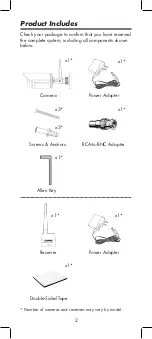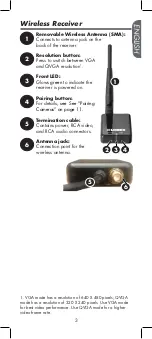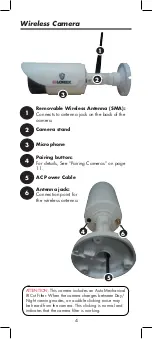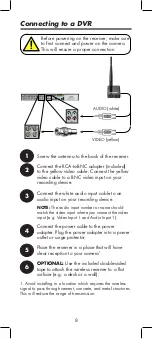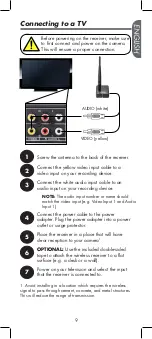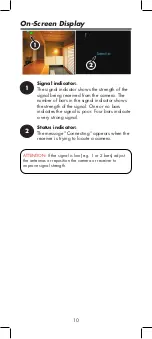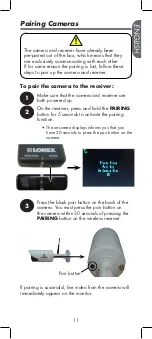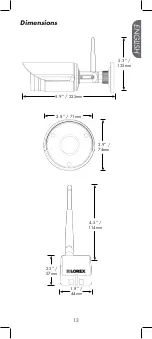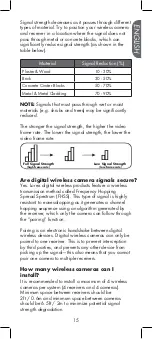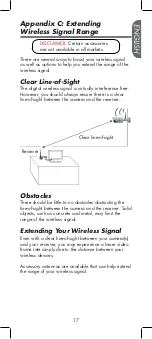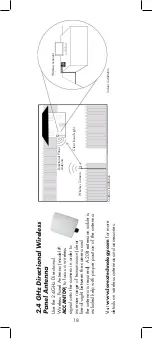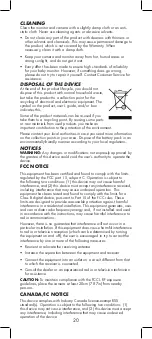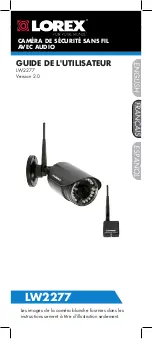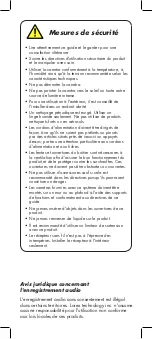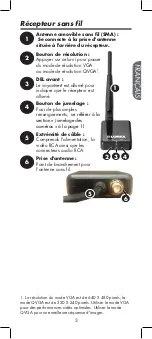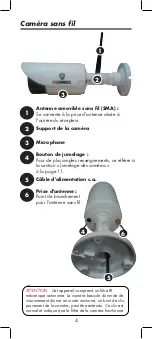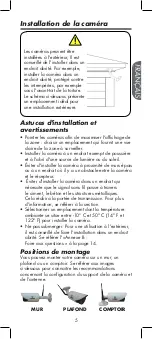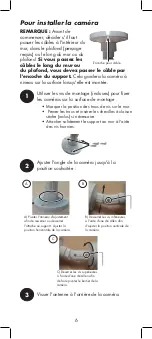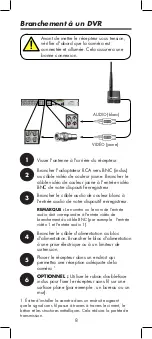
15
ENGLISH
Are digital wireless camera signals secure?
Signal strength decreases as it passes through different
types of material. Try to position your wireless camera
and receiver in a location where the signal does not
pass through metal or concrete blocks, which can
significantly reduce signal strength (as shown in the
table below).
Material
Signal Reduction (%)
Plaster & Wood
10 - 30%
Brick
30 - 50%
Concrete Cinder Blocks
50 - 70%
Metal & Metal Cladding
70 - 90%
NOTE:
Signals that must pass through wet or moist
materials (e.g. shrubs and trees) may be significantly
reduced.
The stronger the signal strength, the higher the video
frame rate. The lower the signal strength, the lower the
video frame rate.
Yes. Lorex digital wireless products feature a wireless
transmission method called Frequency Hopping
Spread Spectrum (FHSS). This type of signal is highly
resistant to eavesdropping as it generates a channel
hopping sequence using an algorithm generated by
the receiver, which only the camera can follow through
the “pairing” function.
Pairing is an electronic handshake between digital
wireless devices. Digital wireless cameras can only be
paired to one receiver. This is to prevent interception
by third parties, and prevents any other device from
picking up the signal—this also means that you cannot
pair one camera to multiple receivers.
How many wireless cameras can I
install?
It is recommended to install a maximum of 4 wireless
cameras per system (4 receivers and 4 cameras).
Minimum space between receivers should be
2ft / 0.6m and minimum space between cameras
should be 6.5ft / 2m to minimize potential signal
strength degradation.
Reflection Scattering Refraction Diffraction Attenuation
1
Source:
Xirrus (2010). “Wi-Fi Range Dynamics”.
Retrieved online at http://xirrus.gcsmarket.com/pdfs/
Xirrus_Wi-Fi_Range.pdf
Full Signal Strength
Low Signal Strength
(high frame rate)
(low frame rate)


